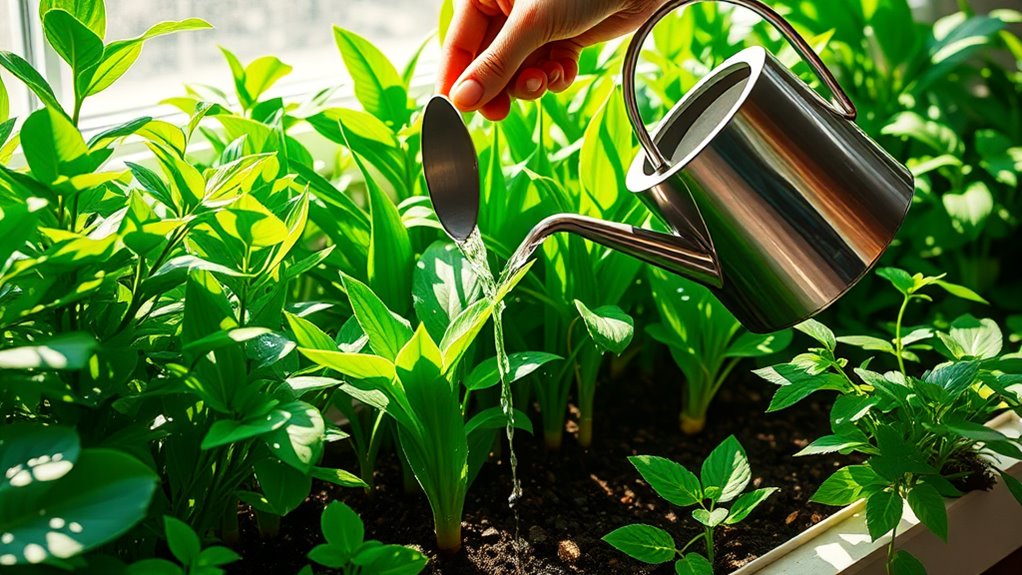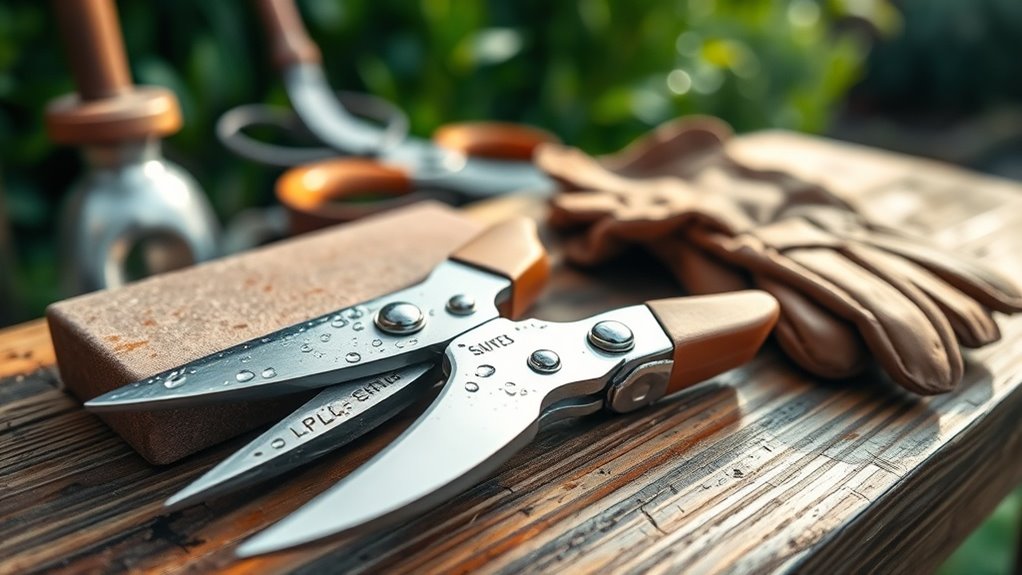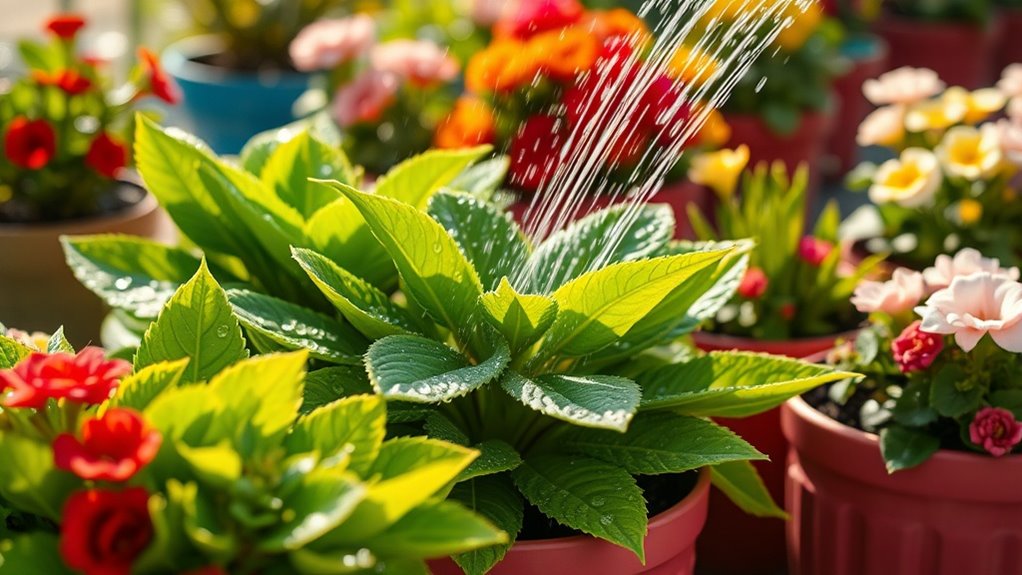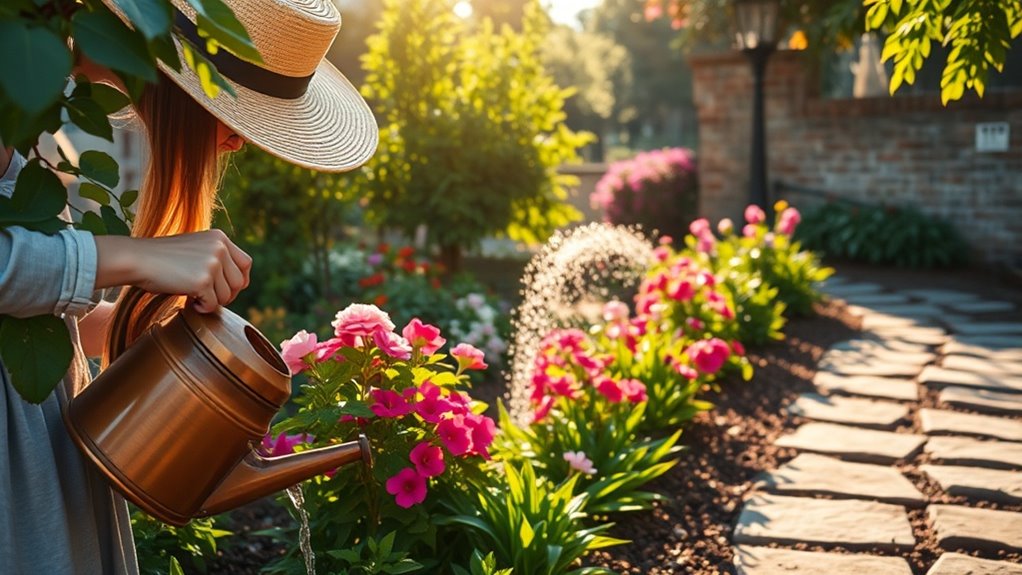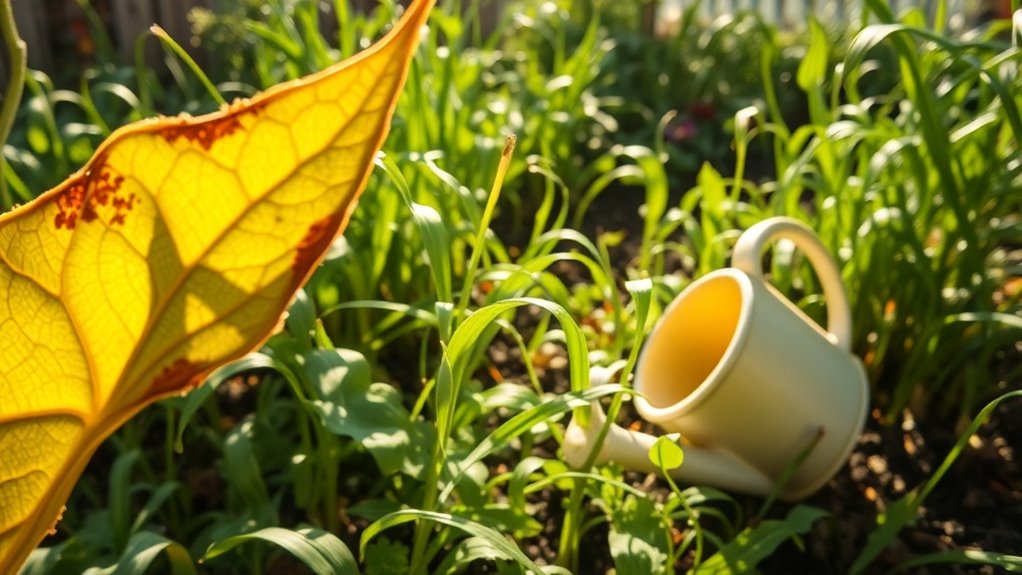You’re Probably Watering Your Plants All Wrong-Here’s the Right Way
You might think you’re adequately watering your plants, but chances are, you could be doing it all wrong. Many plant owners overlook crucial components like soil moisture and timing, leading to overwatering or underwatering. These mistakes can severely impact plant health, causing issues like root rot. To optimize your watering routine, understanding the right methods and tools is essential. What if there were simple adjustments that could transform your plants’ vitality?
Understanding Plant Water Requirements
Understanding the water needs of your plants is crucial for their health and growth. Each species requires different moisture levels, making it essential to research your specific plants.
The correct plant watering schedule considers factors like climate, pot size, and soil type. Monitoring soil moisture helps you apply water efficiently, ensuring your plants thrive without suffering from underwatering or overwatering. Additionally, ideal watering techniques can significantly enhance plant health by promoting better root development and resilience.
Common Mistakes in Watering Techniques
Many plant owners make critical mistakes when it comes to watering techniques that can jeopardize their plants’ health.
Overwatering is a common issue, often stemming from rigid schedules rather than assessing soil moisture levels. Conversely, some neglect to water deeply, leading to shallow roots.
Additionally, watering at the wrong times, like during peak heat, can cause immediate evaporation and stress your plants. Proper hydration is essential to prevent overwatering problems that can lead to root rot and other issues.
Signs of Overwatering and Underwatering
Watering mistakes often manifest through clear signs of either overwatering or underwatering, both of which can severely impact plant health.
Overwatering typically causes yellowing leaves, root rot, and mold growth. In contrast, underwatering results in wilting, browning leaf tips, and dry soil. Recognizing these symptoms allows you to adjust your watering practices, ensuring your plants remain healthy and thriving. Additionally, knowing the signs of overwatering can help prevent further damage to your plants before it’s too late.
Best Practices for Watering Your Plants
To ensure your plants thrive, it’s crucial to follow a few best practices when it comes to watering.
Water early in the morning or late in the afternoon to minimize evaporation. Use deep, infrequent watering techniques to encourage deeper root growth.
Always check soil moisture before watering; only water when the top inch feels dry. Aim for even distribution around the plant. Incorporating water-saving strategies can also help maintain a vibrant garden while conserving resources.
Tools and Techniques to Improve Watering Efficiency
Improving watering efficiency hinges on the right tools and techniques.
Utilize these methods to optimize hydration for your plants:
- Drip irrigation systems conserve water by delivering it directly to the roots.
- Moisture sensors help you gauge soil needs, preventing over-watering.
- Watering cans with a narrow spout allow for targeted application, reducing waste.
Additionally, watering at the right times can enhance plant absorption and minimize evaporation.
Implement these strategies for healthier plants and efficient watering.

